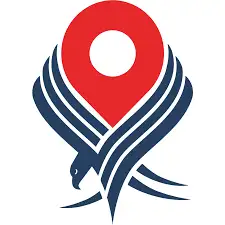CallRail: connecting local SEO to real customer conversions in 2025
In the world of local SEO, ranking well in Google’s local pack or Maps results is only part of the journey. Understanding which efforts lead to actual customer engagement—especially phone calls—can make or break a marketing strategy. CallRail fills this gap by providing advanced call tracking, attribution, and analytics that link local SEO efforts directly to offline conversions. In 2025, as businesses become more data-driven and hyper-focused on ROI, CallRail has positioned itself as an essential tool for anyone serious about measuring and improving local search performance.
Tracking phone calls from local search with precision
CallRail's core strength lies in its ability to track phone calls back to specific marketing sources. For local businesses, phone inquiries remain one of the most common and valuable lead types. Whether it’s a customer calling to book an appointment, ask about store hours, or inquire about services, those interactions often begin from a Google Business Profile or a local landing page. CallRail captures detailed data on where each call originated, whether from organic search, paid ads, Google Maps, or even a specific keyword.
This level of attribution allows marketers to connect local SEO campaigns directly to call volume and lead quality. Instead of just measuring clicks or rankings, businesses gain visibility into real-world actions taken by potential customers. For example, if your Google Business Profile starts ranking higher after an optimization effort, CallRail can show whether that increase in visibility actually resulted in more calls—and whether those calls turned into customers.
Dynamic number insertion and multi-location support
For businesses with multiple locations or service areas, CallRail offers dynamic number insertion, which automatically changes the phone number displayed on your website based on the source or visitor's location. This ensures accurate attribution for each interaction without disrupting the user experience. When someone finds your business through a local search and lands on your site, the system can track exactly which keyword or channel brought them there, and whether they ended up placing a call.
This is particularly useful for franchises, regional service providers, or agencies managing local SEO for multiple clients. Each location or campaign can have its own unique tracking number, yet all the data is consolidated within a unified dashboard. This makes it easy to compare performance across locations and identify which areas or search strategies are driving the most engagement.
Call recording and conversation intelligence
Beyond just call tracking, CallRail provides advanced call recording and transcription features that add a layer of qualitative insight to your SEO performance. By listening to actual customer calls or reviewing transcripts, businesses can evaluate lead quality, assess how staff handle inquiries, and identify frequently asked questions or objections.
For SEO professionals, this conversational data becomes a goldmine of content ideas. If customers consistently ask about a specific service or location, that topic could be addressed in future blog posts, FAQ pages, or landing page copy. The conversation intelligence feature also uses AI to detect key moments in the call—such as booking confirmations, cancellations, or product mentions—which helps businesses automate lead scoring and better understand the intent behind each inquiry.
Integration with Google Business Profile and analytics platforms
CallRail integrates directly with key platforms like Google Business Profile, Google Analytics, and Google Ads, creating a seamless bridge between local SEO activity and measurable outcomes. With these integrations in place, marketers can see not only which GBP views led to clicks but also which clicks led to phone calls. This level of detail supports more informed decisions when allocating budget, refining keywords, or adjusting listing content.
By syncing call data with analytics platforms, businesses can track conversions alongside other metrics like session duration, bounce rate, and on-site behavior. This holistic view of customer engagement is especially valuable in local SEO, where intent can vary dramatically between mobile searches, map clicks, and desktop queries.
Usability and reporting for non-technical users
Despite its advanced features, CallRail maintains a user-friendly interface that appeals to both technical marketers and small business owners. The dashboard is intuitive, clearly separating call data by source, campaign, and location. Reports are customizable and can be scheduled to run automatically, giving users consistent updates on how their local marketing is performing.
CallRail also includes tools for tagging calls, filtering by outcome, and exporting transcripts for training or compliance. Agencies benefit from white-label reporting and multi-account access, making it easy to manage call analytics for multiple clients without losing visibility or control.
Bottom line
CallRail brings a layer of accountability and clarity to local SEO that few other tools can match. By tying local search performance directly to phone call conversions, it helps businesses move beyond vanity metrics and focus on what really matters—customer action. With its powerful tracking, transcription, and integration features, CallRail empowers businesses to understand not only how customers find them, but also how those interactions unfold in real time. In 2025, where precision, attribution, and lead quality are essential to local SEO success, CallRail stands out as an indispensable tool for turning search visibility into tangible business growth.












